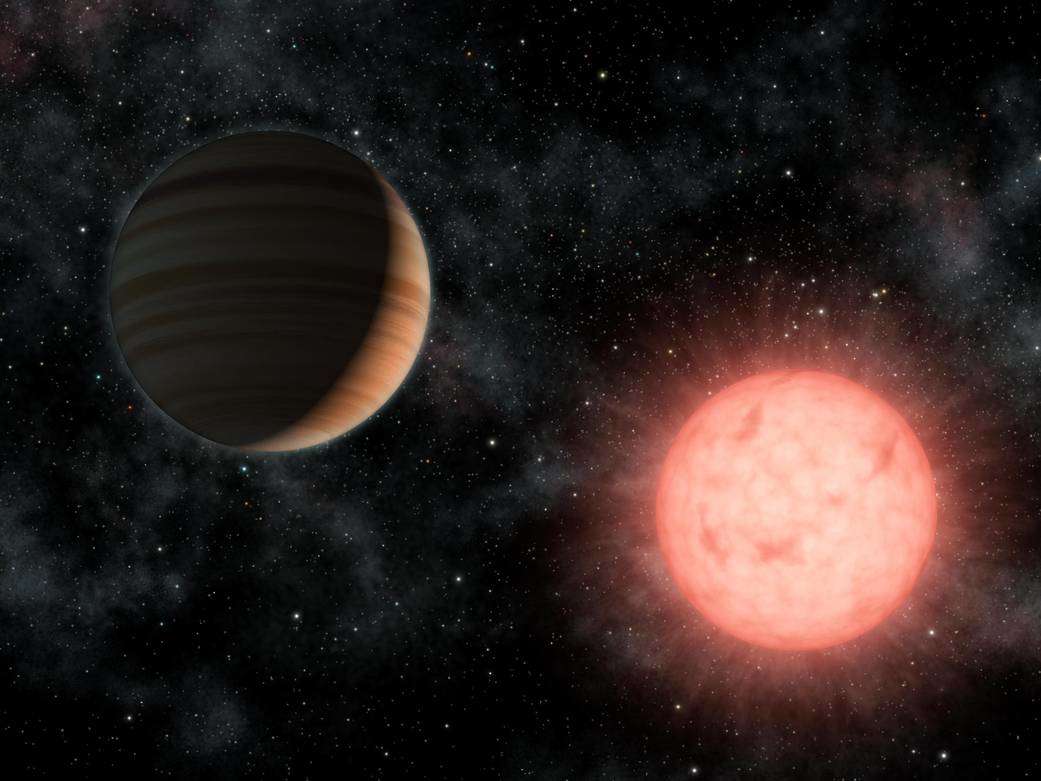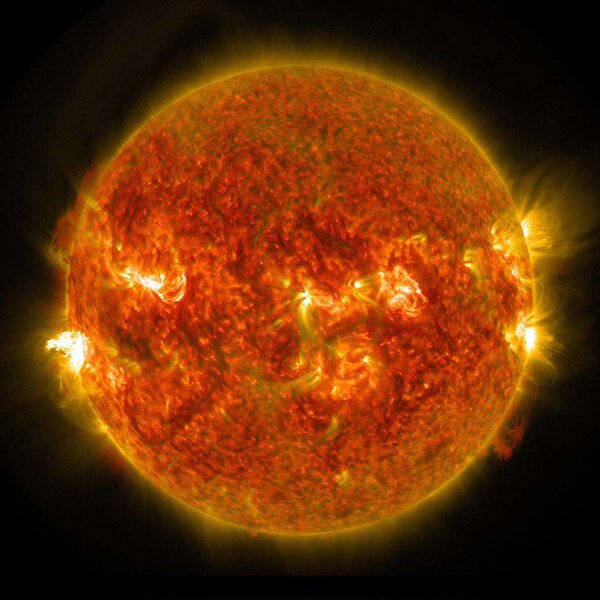Create a free profile to get unlimited access to exclusive videos, sweepstakes, and more!
Way too many stars like the Sun have eaten their planets, but what gives them these cravings?

Stars can be vicious. They vomit gobs of plasma, explode into supernovas, irradiate planets into barren wastelands—and some may even devour a planet given the right opportunity.
Most of the stars in the Milky Way are red dwarfs, or M-types while the Sun is a yellow dwarf, or G-type. Our star’s species is a rarity in this galaxy because one out of every three or four M-type stars has had a planet for dinner. It was the glaring differences in binary stars that gave this away. While stars are usually born in binary systems (and the Sun might have been part of one at some time), mysterious differences in chemistry meant something was off.
Lorenzo Spina of the Astronomical Observatory of Padua in Italy and Monash University in Australia, led a study on this phenomenon, which was recently published in Nature Astronomy.
“Planets, once they have formed, still need to clean their orbits from the leftovers of these circumstellar discs," he told SYFY WIRE. "During this cleaning process, the planetary orbits can be slightly destabilised by the encounter with other objects of similar mass. This is why planetary systems - especially at the beginning of their lives - can be very chaotic environments."
There is no way the chemistry of binary stars can be so different when they are born from the same disc of dust and gas that collapses in on itself. More than half of all stars are thought to exist in binary systems. After the collapse, a young star emerges. Sometimes multiple collapses turn into multiple stars. Other times, an embryonic ball of fire feeds off the remains of the disc around it, but when gravity grows unstable, those remains are often fragmented and end up forming a second star. These stars end up orbiting each other.
There are still some uncertainties, but the study has shed more light on chemical differences in binary star systems that probably come from one of those stars having eaten at least one of its planets and absorbing the stuff it is made of. Planets that end up being swallowed are usually the ones with their orbits thrown off course by gravitational instabilities. These planets are thought to have formed further out in their systems, because there is no way they could have even come into being in an unstable environment close to where their host stars were forming.
"Planet-eating stars should be richer in elements like iron, titanium, aluminum than stars that have not undergone such dramatic events," Spina said. "Among these two classes of stars, stars that are not enriched of these elements have a higher probability of hosting stable planetary systems, hence complex life."
The kind of stability you find in our solar system is rare. There is some chaos, but not to the point of the Sun eating Mercury. Planets in unstable systems usually succumb to one of two fates. They are either kicked out and roam the cosmos as rogue planets, or creep too close to one of their host stars and end up being engulfed by the flames. Some planets that get too close are partly eaten, a phenomenon called tidal stripping. Suddenly having less mass throws the planet’s orbit off even more and makes it more prone to being eaten entirely.
"The stable and nearly circular motion of the planets in our own Solar System suggest that they formed on paths similar to their present-day orbits," said Spina. "In contrast, a significant fraction of planetary systems orbiting around other stars suffered from a very chaotic past, which led to the inward migration or pushed planets onto very elliptical and unstable orbits."
Could our Sun have eaten a star in its past? Unless someone can prove for sure that it was a binary star and that the chemistry of its sibling is a mismatch, we will never know for sure. This is what Spina and his team had to do with over a hundred known binary star systems to find out how many M-type stars looked suspicious. About a third of them showed strangely elevated iron levels, and the hotter the star, the higher a planet’s risk of being eaten. Rocky planets are high in iron, and even gas giants like Jupiter supposedly have iron deep inside their cores.
Instability in a star system can also affect habitability, so anyone looking for aliens can probably skip anything too close to a hungry star. Spina believes the stability in our solar system was one of the factors that helped life flourish.
"There is no specific reason why the Solar System has a stable and ordered configuration while other systems had a much more chaotic past," he said. "What it is certain is that a stable configuration favours the flourishing of complex life, like animals and humans.:



























